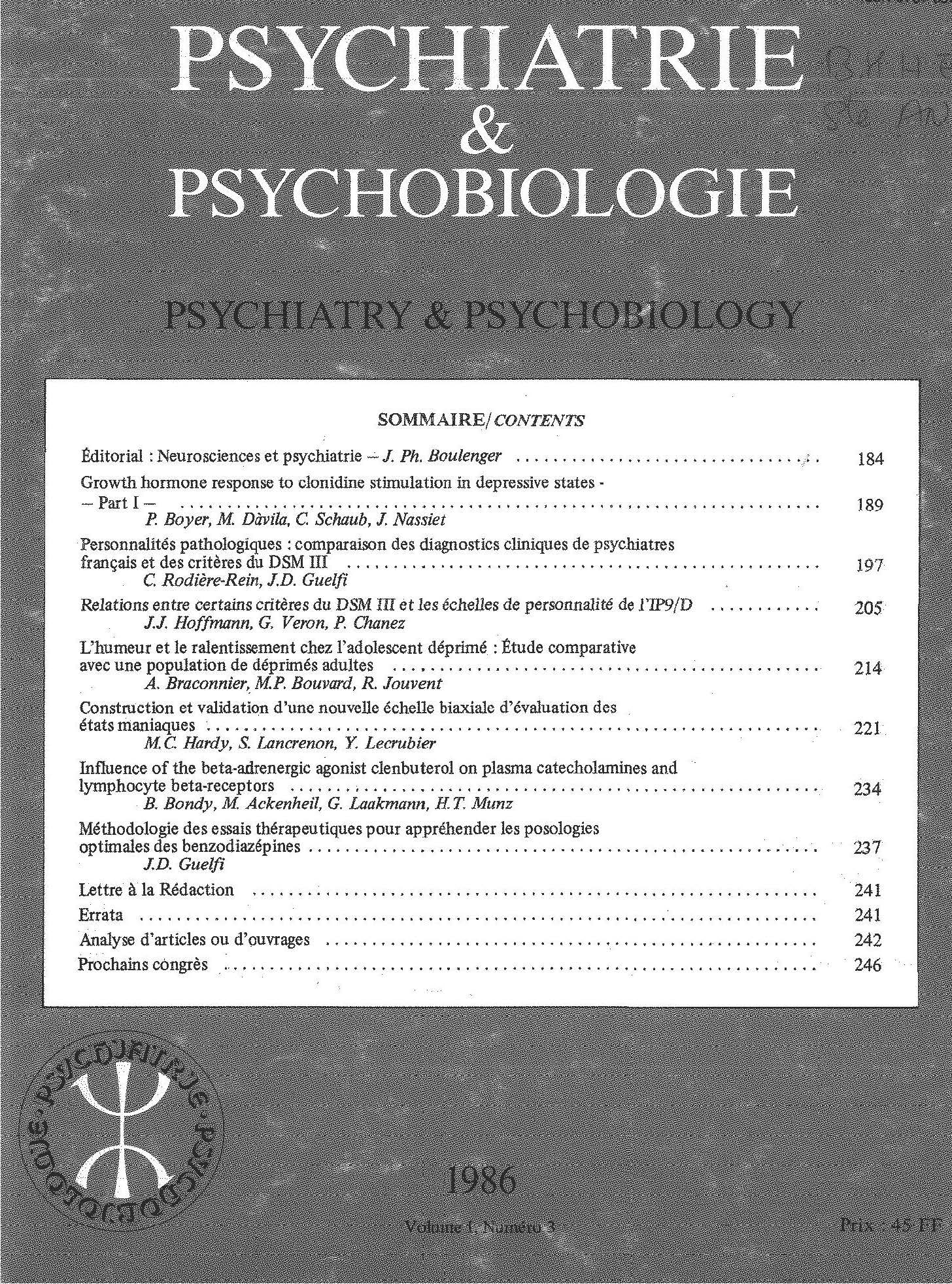Article contents
Encéphalopathie toxique lors d’une association lithium-neuroleptiques
Published online by Cambridge University Press: 28 April 2020
Résumé
Les neuroleptiques sont communemént utilisés en association avec les sels de lithium pour le contrôle de patients sévèrement désorganisés. Cette pratique est généralement sûre mais peut cependant, dans de rares cas, conduire au développement d’un syndrome neurotoxique aigu, voire d’une altération cérébrale permanente. A propos d’une observation clinique dont la particularité tient peut-être davantage à l’efficacité thérapeutique de la bromocriptine qu’au type de neuroleptique incriminé, les principaux éléments pharmacocinétiques et pharmacodynamiques relatifs à ce type d’interaction sont discutés.
Summary
The association between neuroleptics and lithium is frequent. Despite its usefulness, this association may in rare cases lead to severe neurotoxic syndromes and even to permanent cerebral defects.
Keywords
- Type
- Article court
- Information
- Copyright
- Copyright © European Psychiatric Association 1989
References
Références
- 1
- Cited by



Comments
No Comments have been published for this article.